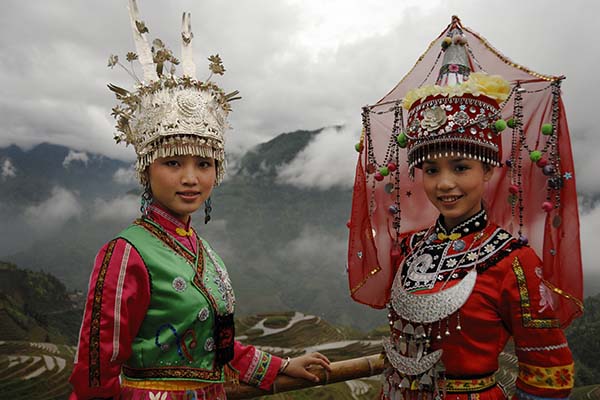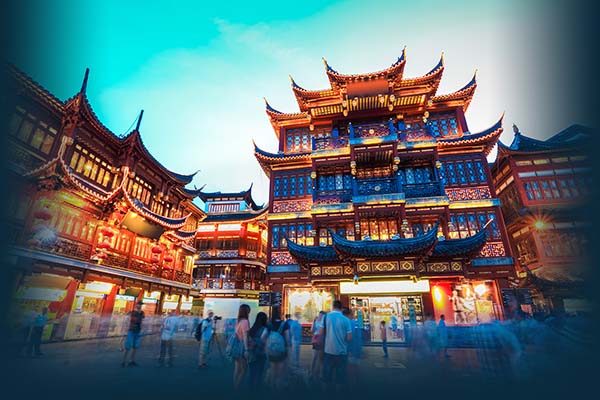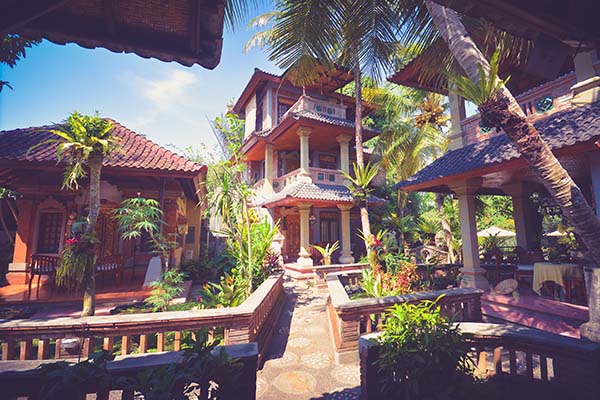







An early territory of conquering empires and groundbreaking trade innovations, Asia is overflowing with legendary destinations. Asia is the eastern portion of the largest continent, taking up a third of the entire Earth’s land area, and contains some of the most populous countries including Japan, China, Vietnam, and Thailand. The variety of landforms in Asia include the The Himalaya mountains, the Gobi Desert, The Bay of Bengal, and The Tibetan Plateau – also known as the the “Rooftop of the World” because of its large area and high elevation. Some of the world’s most captivating animals, such as the panda, the tiger, Asian Elephant, and Komodo Dragon are all found here. Abundant with ancient wonders, favorite sights include the temples of Angkor, Taj Mahal, and the Great Wall of China. Admire at the enormity of the Forbidden City palace, scuba dive in the Phi Phi islands, or float alongside coconut trees on the Mekong Delta. From the superfast magnetic trains to the pagodas, temples, and caves, you’ll immerse yourself into a technological and spiritual narrative in Asia.
Did You Know?
- There are over 1,600 temples in Kyoto, Japan
- China produces 45 billion pairs of chopsticks each year! It is also rude to point your rested chopsticks at fellow diners, and it’s considered bad manners to tap your chopsticks on the side of your bowl.
- The world’s largest flower is the Rafflesia, which is found growing on the forest floors of Malaysia, Thailand and Indonesia, and produces flowers of up to a meter across.
- Western Thailand is home to the world’s smallest mammal – the Kitti’s hog-nosed bat, also known as the bumblebee bat.
- Both the lowest point on land, the Dead Sea (-395meters), and the highest point on land, Mount Everest (over 8,848 meters above sea level), are found in Asia.
- Hong Kong means ‘fragrant harbor’
- Everyone in Vietnam has the same birthday! That’s because they celebrate it on the Vietnamese New Year (Tet), which is on the first day of the lunar calendar each year.
- There are more than 150 volcanoes in Indonesia.
- China is so wide that it should technically be sectioned into 5 separate time zones, but it has only one national time zone (China Standard Time).
- The National Game of Afghanistan essentially entails goat grabbing, which they call Buzkashi.
- Hong Kong has 2.36 mobile phones in use per person.
- The first merchant farmers were all from Asia, not Africa as many people originally thought.
Travel Tips
U.S. Citizens must have 6 months validity on your passport for entry into Asia, plus proof of return ticket. Singapore also requires sufficient funds to stay. Each country has a different rule of entry, so some Asian countries will require you to apply for a visa before you travel there.You’ll also need a yellow fever vaccination in order to travel to a country that has had any cases of yellow fever. Border guards may refuse entry if your passport doesn’t have enough blank pages available, so if check yours to see if you need pages added, or apply for a new one before you travel. Also to note that there are limits on tobacco and alcohol, and drugs and pornography are strictly prohibited. Check with the U.S. embassy or consulate of the countries you plan to visit, or contact your travel expert to guide you. https://www.usembassy.gov/
The weather patterns in Asia are hugely different from country to country, and even within the same country, because of the varied landscape of mountains, plateaus, deserts, jungles, and beaches. In general, the high season to travel is June to August, and December to February. It’s drier then, and sometimes cooler (preferably), although you may see some summer rains in many countries. The wettest season is from September to October, when you might encounter flooding and even typhoons. You may also want to avoid the New Years festivals in many of the countries in April, as well as Tet in Vietnam and Easter in the Philippines. India and Thailand will experience monsoons from June-September, whereas Indonesia is at its driest during that time. Again, the climate is so diverse, so do your research for the exact area and time of year you plan to visit, and contact your travel expert to guide you.
Most of the countries in Asia have their own official currency, and the U.S. dollar is actually a de facto currency for many Southeast Asian countries. But, because of the diversity in customs and population, it’s best to have several options for currency while traveling. Bring your credit and debit cards, but also have some of your home country’s cash or travelers cheques on hand that you may exchange for local currency. Many of the local restaurants and merchants will not accept credit card, so ATM machines in general are the best way to get local cash. Make note to retrieve cash from the ATM when you are in the city, so that you have backup in case networks or access isn’t available in more remote areas.
Asians love their mobile phones and are well connected. However your phone and/or carrier may not work well for travel there. Contact your cell phone provider before you travel, to see if they have an international plan for the area you’re traveling too. For best rates, use an ‘unlocked’ GSM phone to use with a SIM card – and you’ll likely want to get the prepaid plan with a provider in the Asian country you’re visiting, after you arrive there. Skype is another great option for phone or video calls, because Wi-Fi is widespread throughout Asia.
Like the weather patterns, the availability of public transportation varies greatly from country to country. There’s a combination of buses, trains and ferries available, and it can be difficult to know which is best. Bus is usually the most inexpensive, but you’ll usually have to purchase your tickets at the station and it may take longer than other modes. Most Asian countries also have some sort of water transportation, from speedboats to fruit-laden floats, and are highly recommended as they’re usually the most fascinating ways to travel through the region. In the bigger cities you can hire a car, or rent a scooter, and of course Asia is known for the high speed rail routes that can beat some airline schedules!